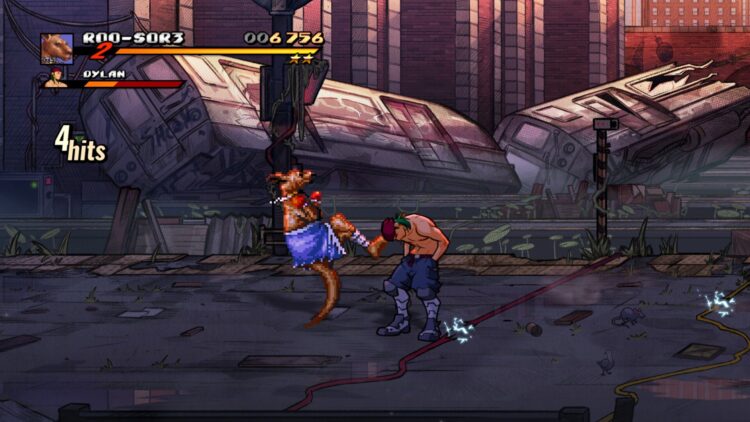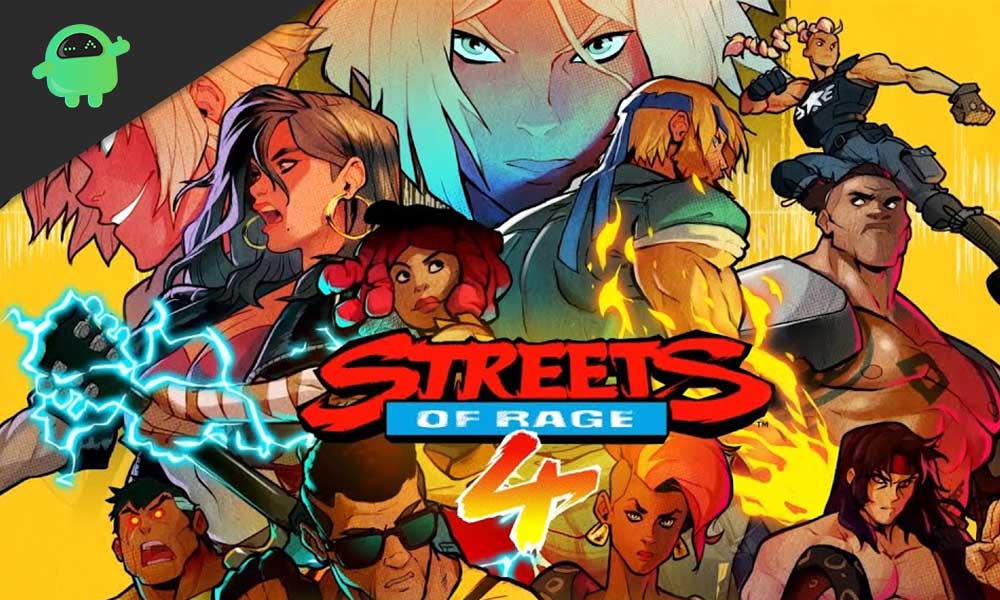

Having access to the original SoR sprites (and their sound effects) was catnip to my brawler-deprived self, and I only wanted more. The more I unlocked, the more I wanted to play, and eventually I’d unlocked it all. And by fundamentals I mean expertly executed combos and a killer soundtrack.īefore you knew it, I’d lost hours and hours thrashing baddies, busting out combos, unlocking more of the game’s secrets. While I’m not the biggest fan of the larger emphasis on projectiles and unblockable baddie attacks, there’s no denying the sheer euphoria of playing a new Streets of Rage game that got the fundamentals right.
STREETS OF RAGE 4 ROO SERIES
It’s a wonder the series managed to attract any new fans during its quarter-century hibernation as it’s hard to get excited over nostalgia that isn’t your own.įor me, Streets of Rage 4, despite its issues, ended up being my most-played game of 2020 – a much-needed blast of nostalgia in a year we all desperately needed to escape from. That and Sega’s piss-poor handling of them made finding the games on new platforms virtually impossible, if not impossible, as even official emulated versions were often of poor quality. He never experienced the games during their original 16-bit releases, having firmly been on the Nintendo side of the Great 16-Bit Revolution.

While reviewing the base game it was obvious even our own Cory Galliher didn’t – or couldn’t – see the significance of the game’s existence, and I don’t blame him. When we spoke with lead artist and producer Ben Fiquet about his Monster Boy remake he didn’t reveal the real monster he was working on, which means we (the journalists and fans) had the opportunity to go in fresh.

With an astonishing 26 year gap between sequels, nobody would ever accuse Sega of rushing these out… which turned out for the best. Like so many of their greatest and most memorable franchises, Streets of Rage would go dormant, content to live on only in countless re-releases and cash-grabs.īut in 2020 we received just that in the form of Streets of Rage 4, a new game in the series that wasn’t developed by Sega, but a trio of developers gifted in the art of remaking older hits. Despite a decent follow-up with 1994’s Streets of Rage 3, it was obvious the party was over – for both the arcade beat ‘em up and, sadly, Sega’s prominence as a console hardware leader. Unfortunately, it was destined to “compete” with another Capcom hit – this time one the fading arcade brawler couldn’t counter: Street Fighter II and the dominance of the fighting game.Īs great as Streets of Rage 2 was (and remains) the franchise wasn’t long for this world. Everything was bigger, badder, better… a 16-bit intergeneration hallmark that proved there was life yet in Sega’s aging hardware. While graphically inferior to Capcom’s offering, it featured better more characters, 2-player gameplay, and, of course, that fabulously crunchy soundtrack by Yuzo Koshiro, which absolutely killed.Ī year later Sega would astonish fans even further with Streets of Rage 2, a vastly superior sequel that not only took the franchise to new heights, but the genre itself. Sega’s answer to prove their 16-bitter was no slouch was to release the original Streets of Rage, an urban clone of their own Golden Axe that was wholly an original game you could only find in Sega land. The newly-released Super Nintendo shipped with a great-looking, albeit crippled version of Capcom’s arcade smash Final Fight. Few developers helped dominate the scene quite like Sega, which made their promise of “bringing the arcade home” to their 16-bit Sega Genesis more necessary than ever.

How can franchises and characters that entertained, inspired, and thrilled so many just…vanish?ĭouble Dragon? Final Fight? Golden Axe? Cadillacs and Dinosaurs? Even The Simpsons and Teenage Mutant Ninja Turtles represented like champs. Think MOBOs, only out in public and gobbling quarters even faster than laundromats (fact check: true!). It’s hard to believe how dominant a genre the arcade beat ‘em up once was. The world of gaming moves on, as ever, leaving the cleanup for the last to leave. Some legends suffer a fate worse than death they burn bright, only to become forgotten.


 0 kommentar(er)
0 kommentar(er)
